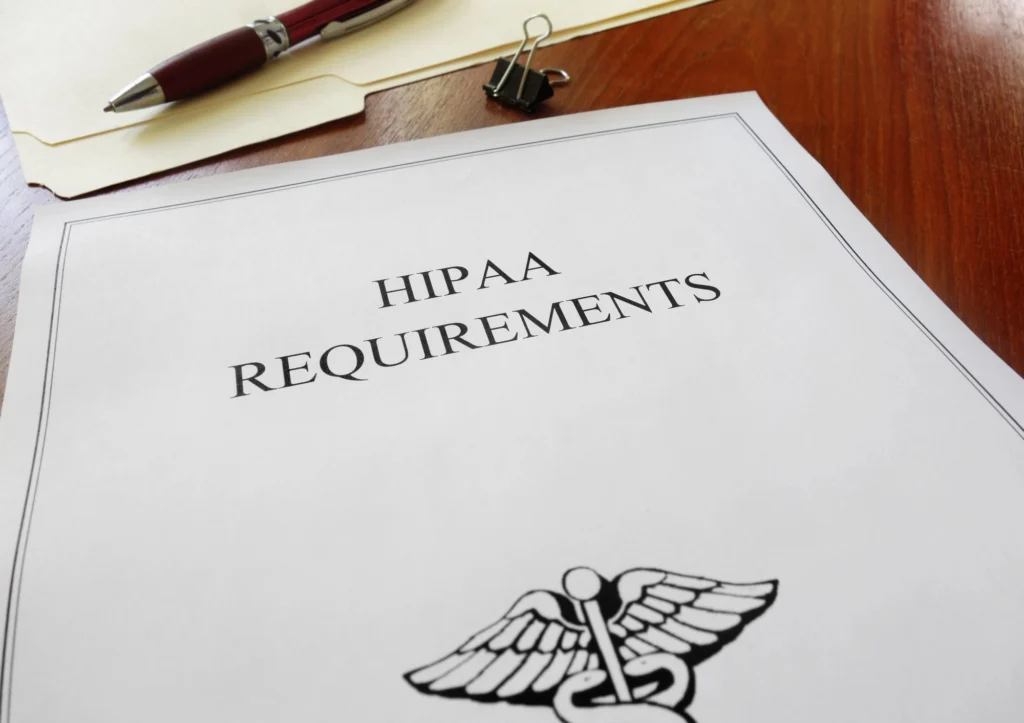
Labeling is a small detail with major implications in healthcare compliance. When done right, it protects patient privacy, supports operational efficiency, and helps prevent costly mistakes. But when labeling falls short—whether through exposed PHI, poor legibility, or improper disposal—it can result in serious HIPAA violations.

According to the U.S. Department of Health and Human Services (HHS), HIPAA breaches can carry fines of up to $50,000 per violation, with a maximum penalty of $1.5 million per year. More importantly, they can damage a healthcare facility’s reputation and compromise patient trust. The good news? Most HIPAA labeling violations are preventable with clear policies, proper training, and the right label products.
The Violation:
Displaying patient names, ID numbers, or other PHI where they can be seen by unauthorized personnel—especially on specimen labels—poses a serious patient identification risk and may violate HIPAA’s Privacy Rule. This includes labels left visible in shared areas like nurse stations, transport carts, and lab counters.
Solution:
Use discreet labeling practices and apply only the minimum necessary PHI. Barcode-ready labels with minimal visible text can help ensure only authorized staff can access patient data. Consider tamper-evident labels or those designed for compact placement on sample containers to limit exposure.
The Violation:
Illegible labels—caused by smudging, fading, or unclear handwriting—can lead to patient misidentification. This is one of the most common lab mistakes and a serious HIPAA risk when incorrect information is recorded or disclosed.
Solution:
Use high-contrast, smudge-resistant labels designed for healthcare environments. Direct thermal or thermal transfer labels with strong adhesive help maintain integrity during handling, transport, and refrigeration. Avoid handwriting when possible by integrating barcode systems for automation.
The Violation:
Leaving labeled materials—like charts, bins, or lab specimens—with PHI visible in areas accessible to patients or visitors can be a breach of confidentiality.
Solution:
Train staff to store all labeled materials out of public view. Use color-coded labels (e.g., red “Confidential” or “Cover When Not in Use”) to flag sensitive info. Chart labels and allergy alerts should always be used in combination with proper storage protocols.
The Violation:
Throwing labeled materials (e.g., patient files, medication containers, lab printouts) into regular trash exposes PHI to anyone who may come into contact with it—creating a clear HIPAA violation.
Solution:
Implement shred bins and biohazard containers for all labeled materials. Use labels that are easy to remove when disposal is needed, or opt for direct thermal labels that degrade under certain conditions. Include disposal protocol training in your compliance program.
The Violation:
Using open-access printers or unsecured label inventory can lead to misuse or unauthorized access to PHI.
Solution:
Secure all labeling stations with restricted user access and password protection. Inventory sensitive materials like HIPAA compliant labels and syringe flags. Use system-compatible label formats designed for integration with your EHR, limiting manual input and unauthorized printing.
Medical labeling mistakes might seem like small oversights, but their impact can be serious—HIPAA violations, patient safety risks, and operational slowdowns. Taking a proactive approach to your med labeling strategy is an investment in both compliance and efficiency. It helps reduce liability, avoid costly fines, and build trust across your organization.
Start with a simple audit: Are your labels legible, securely placed, and properly stored? Do they meet HIPAA requirements for protecting patient information? If not, it’s a sign your system may need an upgrade.That’s where Nev’s Ink can help. We offer custom labels and HIPAA-compliant solutions designed for healthcare environments—tamper-evident, barcode-ready, and tailored to fit your workflow. Strengthen your compliance strategy and move toward safer, more efficient operations today.